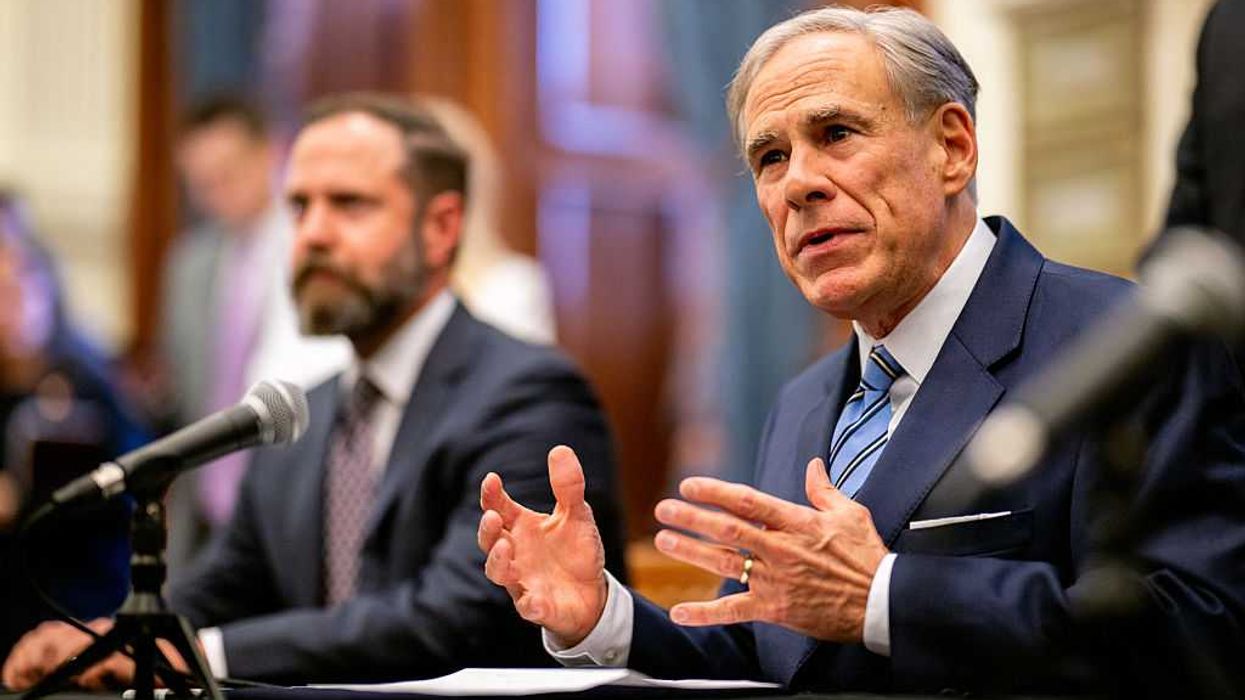As we've seen with the 2008 Great Recession and the stock market ups and downs the past few weeks, our society will never be immune to negative economic outcomes.
Whether it be a stock market crash or a foreign attack on our banking systems, there are a variety of potential situations that could negatively impact our financial well-being as individuals and as a country.
Fortunately, there's a lot we can learn about preparation for economic worst-case scenarios simply by looking at the recent past—the Great Depression, for example.
The Great Depression started when the stock market crashed in 1929 and lasted until 1939. By its lowest point in 1933, roughly 15 million Americans were unemployed and nearly half the country's banks had failed.
Thanks to human resilience and creativity, many people were able to survive this tough time in U.S. history.
That's why today I'm sharing ten concrete survival tips we can glean from the Great Depression. Understanding what people did to survive during this tough economic period helps us to prepare in advance for similar situations.
With tightening monetary policies and geopolitical risks, Morgan Stanley analysts have determined that 2018 is on track to be the most volatile since the financial crisis.
There's no better time to read this list and prepare yourself and your loved ones.
And with that, here they are...
#1 Grow your own food

During periods of economic hardship, the last thing you want to do is rely on external systems for your own food sources.
During the Great Depression, the United States' industrial production dropped by half.
Farmers couldn't afford to harvest their crops, and bread lines, soup kitchens, and rising numbers of homeless people became fairly common in America's towns and cities.
About 20 percent of the population lived on farms. Fortunately, many city dwellers still had gardening knowledge from their country days. If your family had a cow and a garden, you were considered rich.
Today, with a growing urban population, it's less common to possess basic gardening knowledge. We've lost that skill overall in our culture.
But in the case that grocery stores become too expensive or simply run out of food during a financial meltdown, it will be essential to know how to grow your own food.
Take the time now to learn how to plant and harvest foods—whether in your house, backyard, or on your rooftop.
At My Patriot Supply, we have a product called the Survival Seed Vault by Patriot Seeds, which are perfect for gardens like those grown during the depression.
Containing 21 varieties of USDA Certified Organic Heirloom Seeds, they can last 5+ years in proper storage.
#2 Learn to hunt, fish and forage

Like learning to garden, it's equally important to learn to find and hunt your own animal protein sources...before disaster strikes.
If you have a family member or friend who's experienced, there's no better time than now to ask for a lesson in the basics. Who knows? Maybe you'll discover a new hobby along the way.
During the Great Depression, foraging for edible plants helped many people sustain themselves.
For example, nuts and wild asparagus were common findings for families that would go out foraging for the day. Identify the areas in your local community where you can find and harvest additional food. Keeping a deck of Edible Wild Foods Playing Cards nearby would be of help as well.
#3 Turn to a barter system if banking systems shut down
In the years and decades before the Great Depression, banks were revered. No one ever considered the idea that they could fail and that their money would simply disappear. When many of the banks closed down as a result of the crisis, the only cash people had was whatever they had on hand or stored up at home. This was unfortunate, because the banks would close down with virtually no warning—leaving no time to go make cash withdrawals from accounts. And people were forced to rely on other forms of value exchange.
Bartering is an age-old practice that human civilizations have used for generations—even before banks were created.
During the Depression, payment was often made with eggs, fresh milk or produce. Bartering was also beneficial because it meant that families could add different types of food to their meals—expanding the variety of produce they could consume.
Bartering makes an additional case for learning to grow, hunt and forage for food—it gives you more of a base to use in negotiations and trades. Bear in mind that food isn't the only valuable item—during the Depression, things like wood could be collected, split and exchanged as firewood.
In our modern-day context, everything from additional fuel for camp stoves to ammunition for weapons can be valuable barter items. See our recent Survival Scout article on the Top 15 Items That Disappear When Disasters Strike for more valuable barter items.
#4 Be as resourceful as possible
If you have a grandparent or parent that lived through the Great Depression, you've likely heard or seen them express values of resourcefulness and frugality. They were our last, truly self-reliant generation.
For example, they might tell stories about how they used...
- Pieces of rubber tires as replacement soles when shoes were worn through.
- Anything and everything you might find in the kitchen or that was donated by others to make what became known as "Depression Soup."
- Flour-sacks to make dresses.
- Newspapers to wrap presents.
Knowing how to reuse and recycle everything was the name of the game in those days—and something we can all benefit from.
Challenge yourself to see everything as multifunctional, and get creative with what various items can be used for, in the event that your resources are depleted.
#5 Sleep outside during heat waves
Air conditioning is a luxury many of us take for granted. In the case that it becomes too much to afford or your unit breaks and replacement parts cost you a small fortune, you'll need to find ways to beat the heat.
During the summer months of the Great Depression, it wasn't uncommon to see whole families sleeping on their front lawns or in local parks.
Additionally, they would use other cool-down tactics such as hanging wet sheets over doorways. Hot air was slightly cooled as it passed through the wet fabric.
#6 Strengthen family and community bonds
During the Great Depression, it wasn't uncommon to have grandparents, aunts, uncles and cousins living in the same house or vehicle. With so many displaced, it was critical to rely on extended family for help.
The same was true of neighbors, and you'd see people donating meals and money whenever possible. Some communities even organized what they called "surprise parties." They would collect food and necessities (including cash), and then designate a particular family to receive the collection at each surprise party.
This spirit of generosity and community bonds is apparent in many stories from the Depression. The people who did well during this difficult time were often those who depended on family and friends and were able to be depended on by others.
Take the time to establish and strengthen these bonds, with neighbors and your local community, now—don't wait until an economic collapse makes everyone desperate.
#7 Be a jack-of-all-trades

When it came to finding work during the Depression, it helped to be a jack-of-all-trades. These people could often find work when others couldn't.
The following skills will come in handy during periods of hardship:
- Sewing/knitting
- Fixing plumbing
- Home or car repairs
- Gardening, canning/food preserving
- Sharpening or making tools
- Butchering and curing meat
- Metal- or woodworking
- Gunsmithing
- Cheese or candle making
- Recognizing wild edibles
In our knowledge-based economy today, handymen and jacks-of-all-trades are harder to come by. Develop a competitive advantage and learn these skills now. They will certainly come in handy (no pun intended) later.
#8 Stock up on supplies

During the Great Depression, housewives could be judged by how many jars they had "put up" during harvest season.
When things go awry, you can bet that items will be flying off the shelves at local stores. Don't wait until then to stock up on the essentials, or to start canning and jarring your own food. Make sure you have enough stored up to last you for several months, at the very least.
To get you started, at My Patriot Supply, we sell a Three-Month Emergency Food Supply that can provide you with a strong hedge against economic downturn. With a 25-year shelf life, this supply includes delicious meals that average 2,000+ calories per day for one person.
#9 Don't rely on credit cards or loans

Too many of us rely on credit cards and loans from the bank to make big-ticket purchases.
However, during the Depression, many people had to buy their first cars and homes in one lump sum since they couldn't rely on a bank to give them a loan. To do this, they would live with family members and save whatever cash they could as they worked.
Avoid taking out a loan and going into debt—and start saving a supply of cash now.
You should also make sure you have a supply of assets outside of cash or credit. Whether it be houses, land or precious metals, make wise investments into long-lasting items of value. As we've seen with the Great Depression, keeping the majority of your wealth and money stored at the bank isn't exactly the most secure solution.
#10 Remain positive
Aside from relying on barter systems, growing your own food, and learning to hunt and scavenge, there's a great deal of mental resilience needed to survive tough events like the Great Depression.
According to Murray Hunn, head of global research at Elliott Wave International, "We think the major economies are on the cusp of this turning into the worst recession we have seen in 10 years."
With predictions like this, there's cause for preparation.
And as one woman who survived the Great Depression shared, "Poppy always said the world turns and everything that has happened would happen again. I am sure if he were still with us today he would be warning us to start a garden and buy some chickens."
Take these lessons in stride, and learning from the past makes all the difference when life as we know it changes drastically.


 Adam Gray / Stringer | Getty Images
Adam Gray / Stringer | Getty Images
 Anadolu / Contributor | Getty Images
Anadolu / Contributor | Getty Images Brandon Bell / Staff | Getty Images
Brandon Bell / Staff | Getty Images Europa Press News / Contributor | Getty Images
Europa Press News / Contributor | Getty Images